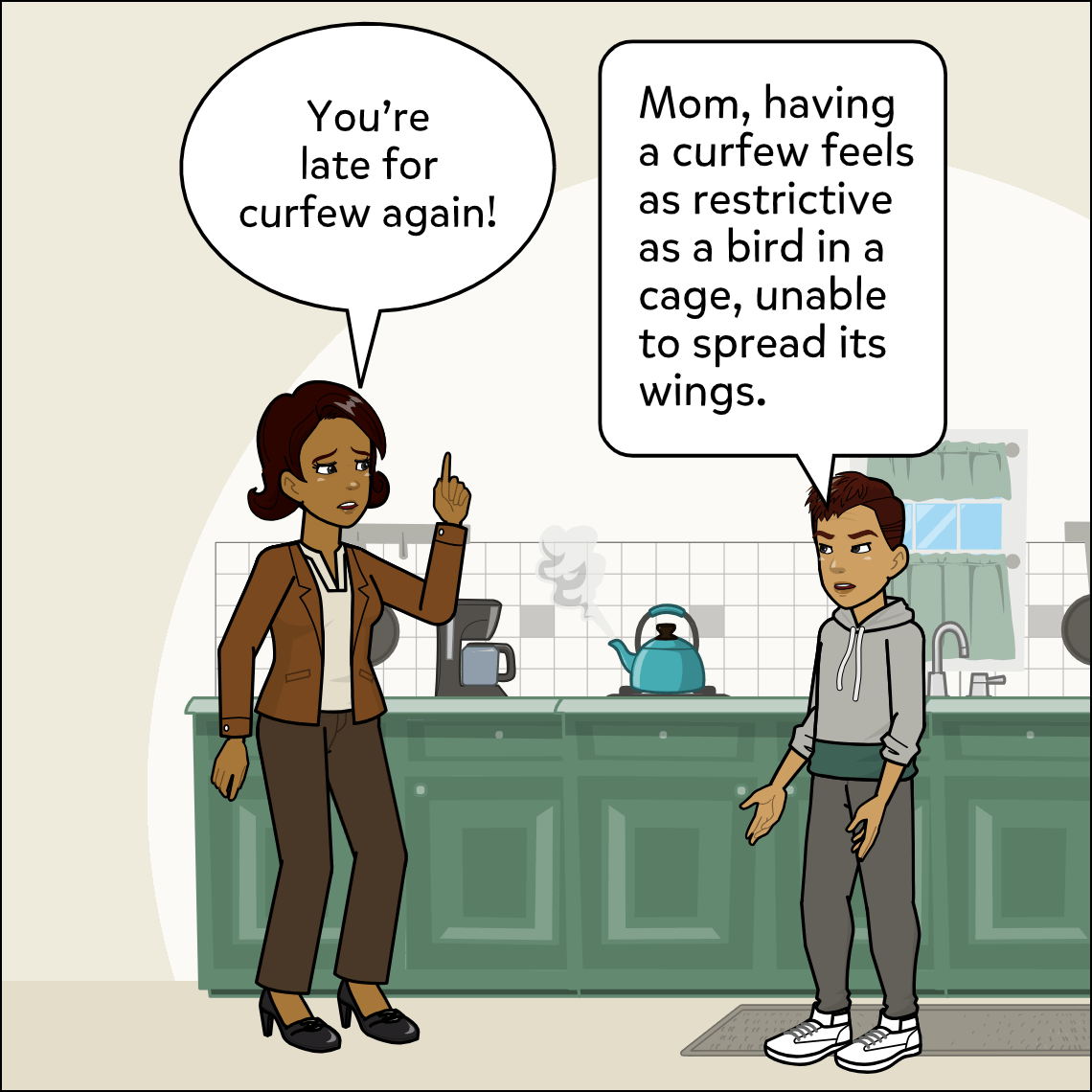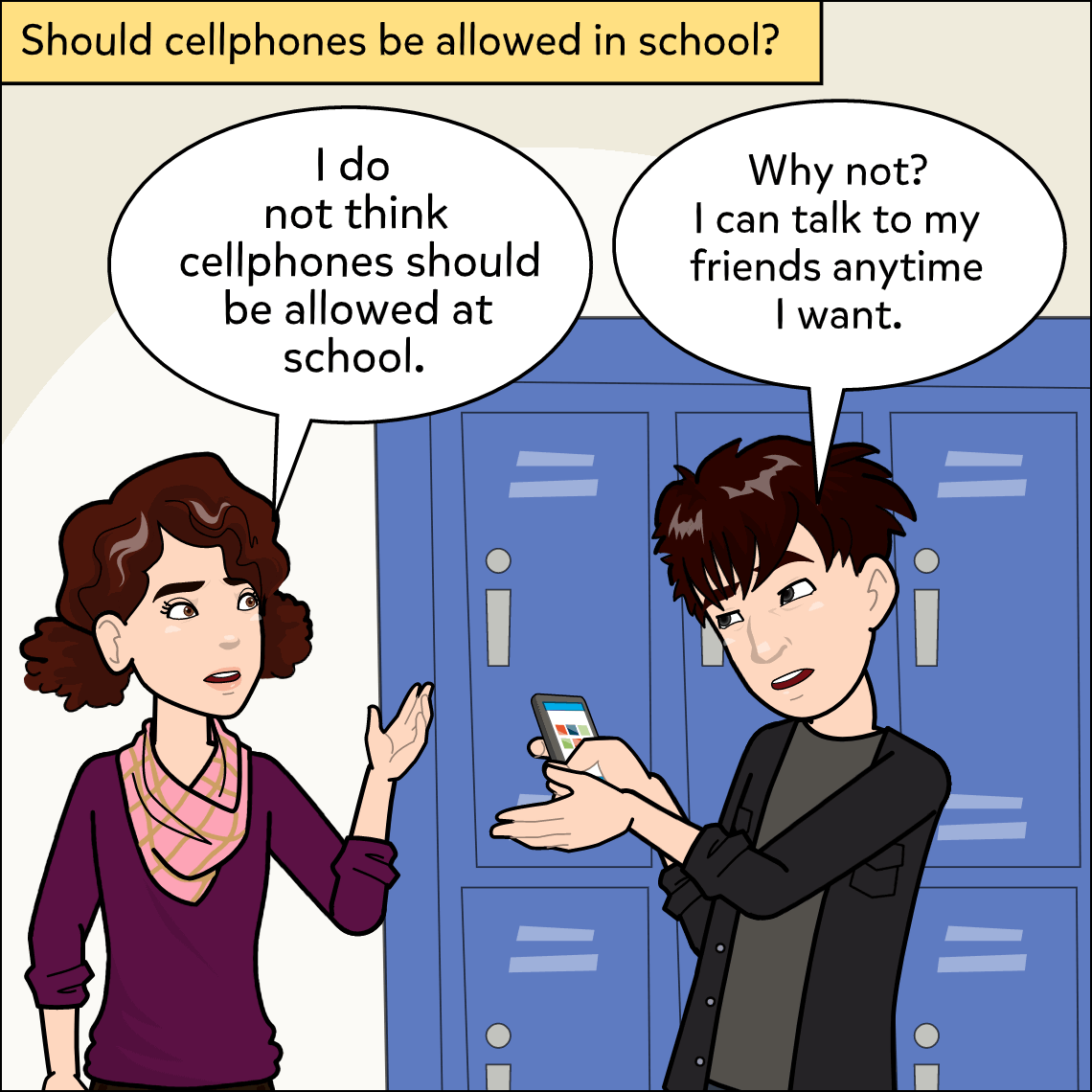Subject: ELA (English Language Arts)
Lesson Length: 1 - 2 class sessions
Topic: Argumentation, Substantiation, and Analysis
Brief Description: Students will construct persuasive arguments, as well as provide analysis for both a modern work of fiction and a foundational U.S. historical document.
Know Before You Start: Students should be familiar with rhetorical analysis strategies, as well as the concept of intertextuality. Students should also be familiar with the historical context of The Declaration of Independence.
Hook:
- Ask students:
- “Is there a contemporary topic, e.g., pollution, school policies, equal rights, etc. that you have a strong opinion about?”
- “Have you ever tried to persuade someone to see things from your point of view on a controversial issue? How did you go about it, and were you successful?”
- "Can you think of a recent news article or social media post related to the chosen contemporary topic? How did it make you feel, and did it influence your opinion on the matter?”
Activity:
- In pairs, have students listen to a selected passage from “The Lorax” by Dr. Suess and then discuss the following aspects of the passage:
- The contemporary topic or theme addressed.
- The main argument presented by the Lorax and the Once-ler.
- The persuasive techniques used by both characters to convey their messages.
- Have students engage in a class discussion about how children's literature, like "The Lorax," can effectively convey important messages and inspire action on contemporary issues such as pollution and environmental conservation.
- Have students read additional passages from “The Lorax” and highlight any intertextual elements related to themes from myths and religious works, such as the Garden of Eden and the Tree of Knowledge. Explain that these elements add depth to the story and allow for discussions about environmental responsibility and consequences.
- Have students analyze The Declaration of Independence to identify its main themes (i.e. independence, freedom, individual rights, sovereignty, etc.), while also considering the historical context in which it was written.
- Have students examine the document's rhetorical features, such as persuasive language and appeals to ethos, pathos, and logos, utilizing a T-chart to record their answers. On the T-chart, they should create columns for ethos, pathos, and logos on the left column, and record examples of each they find in the document on the right
- Have students identify specific arguments within the document, along with the evidence used to substantiate these arguments, and also record them on the T-chart with arguments written on the left column and the evidence or reasons presented in the document on the right.
- Have students select a contemporary topic e.g., pollution, school policies, electric cars, etc. that interests them and, in pairs or individually, brainstorm arguments for both agreeing and disagreeing with a specific aspect of their chosen topic.
- Have students conduct research on their chosen contemporary topic, gathering evidence from credible sources to deepen their understanding. They will then craft three well-substantiated arguments, ensuring that each argument is supported by compelling evidence, thereby honing their ability to construct persuasive and well-informed arguments.
- Have students share their chosen contemporary topics and briefly present their arguments (agree or disagree) to the class. Encourage them to use evidence and persuasive techniques learned during the lesson.
- Using the sample comic as a guide, have students create a comic in which they agree or disagree about a topic of their choice.
Closure:
- Have students share their comics with the class or in small groups.
- Have students explain how their comic conveys irony.
- Emphasize the importance of constructing well-reasoned arguments in both literature and history and how analyzing fictional arguments and historical documents can help students improve their persuasive writing and critical thinking skills.
Differentiation:
- Allow students to use the speech-to-text feature.
- Allow students to work in pairs or groups as needed.
- Allow students to use the voiceover feature to read their comics aloud.
- Incorporate the Closed Caption feature if showing the video.
- Pre-teach vocabulary or provide vocabulary definitions, e.g., document analysis, rhetorical analysis, intertextuality.
Resources:
- Comic to print or display: Comic.
- The Lorax by Dr. Seuss
- “The Lorax” by Dr. Seuss - Read Aloud Picture Book
- The Lorax (1972) Movie
- The Lorax (2012) Scene - “Let It Grow”
- The Lorax (2012) Scene - Did You Chop Down This Tree?
- The Declaration of Independence
- GALE (Open Access through Local Library)
- T-Chart
Suggested Content:
 Rainforest
Rainforest
 U.S. Justice System
U.S. Justice System
 Urban
Urban
 Energy
Energy


